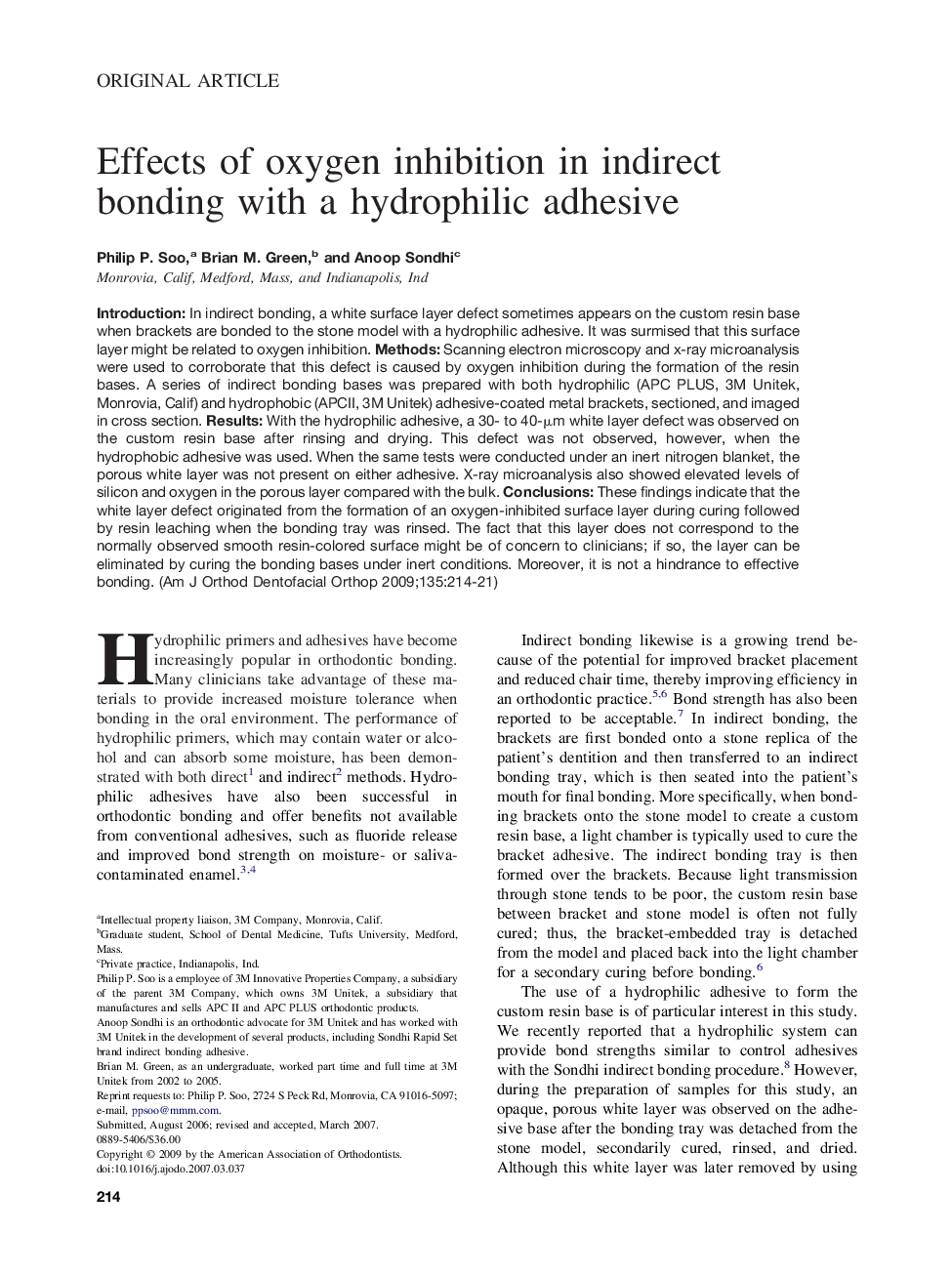| Article ID | Journal | Published Year | Pages | File Type |
|---|---|---|---|---|
| 3118280 | American Journal of Orthodontics and Dentofacial Orthopedics | 2009 | 8 Pages |
IntroductionIn indirect bonding, a white surface layer defect sometimes appears on the custom resin base when brackets are bonded to the stone model with a hydrophilic adhesive. It was surmised that this surface layer might be related to oxygen inhibition.MethodsScanning electron microscopy and x-ray microanalysis were used to corroborate that this defect is caused by oxygen inhibition during the formation of the resin bases. A series of indirect bonding bases was prepared with both hydrophilic (APC PLUS, 3M Unitek, Monrovia, Calif) and hydrophobic (APCII, 3M Unitek) adhesive-coated metal brackets, sectioned, and imaged in cross section.ResultsWith the hydrophilic adhesive, a 30- to 40-μm white layer defect was observed on the custom resin base after rinsing and drying. This defect was not observed, however, when the hydrophobic adhesive was used. When the same tests were conducted under an inert nitrogen blanket, the porous white layer was not present on either adhesive. X-ray microanalysis also showed elevated levels of silicon and oxygen in the porous layer compared with the bulk.ConclusionsThese findings indicate that the white layer defect originated from the formation of an oxygen-inhibited surface layer during curing followed by resin leaching when the bonding tray was rinsed. The fact that this layer does not correspond to the normally observed smooth resin-colored surface might be of concern to clinicians; if so, the layer can be eliminated by curing the bonding bases under inert conditions. Moreover, it is not a hindrance to effective bonding.
